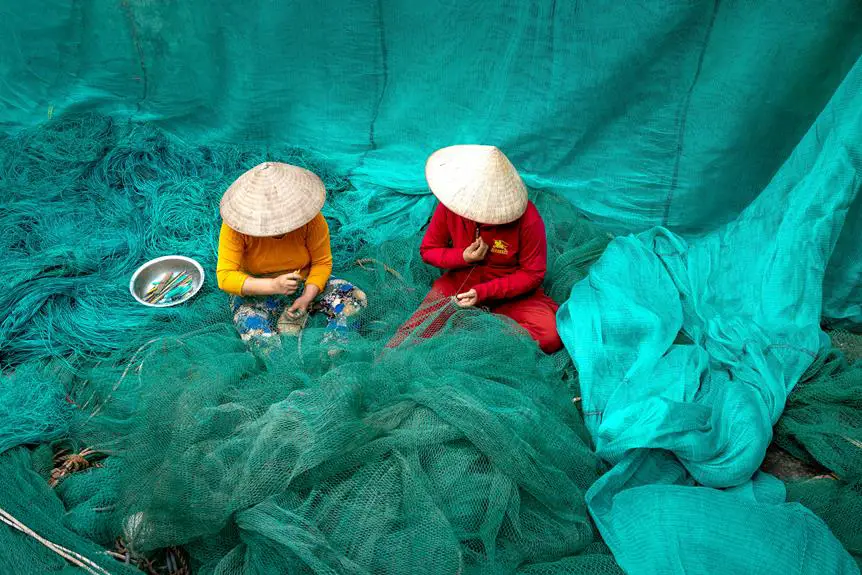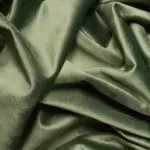When you notice damage to your seersucker fabric, it's crucial to assess the situation carefully. You'll want to identify whether you're dealing with small tears or larger holes, as the repair method will differ significantly. Having the right tools on hand can make a world of difference in achieving a seamless fix. As you consider your options, think about how to prevent future issues, too. This discussion will cover effective techniques that can prolong the life of your beloved fabric, ensuring it stays in top shape for years to come.
Table of Contents
Identifying Common Issues
When dealing with seersucker fabric, you'll want to identify common issues like fading, fraying, or pilling that can affect its appearance and durability.
First, check for fading, which often occurs due to prolonged exposure to sunlight or harsh washing detergents. If the colors look washed out, it's a sign that the fabric might need some special care or even a dye treatment to bring it back to life.
Next, inspect the edges and seams for fraying. This problem arises from wear and tear, particularly in areas that experience frequent movement. If you notice loose threads or uneven edges, it's crucial to address them quickly to prevent further damage.
Lastly, look for pilling, which manifests as small, fuzzy balls on the fabric's surface. Pilling can occur from friction or poor-quality fibers. You can gently remove these pills with a fabric shaver or a lint roller.
Tools and Materials Needed
To repair seersucker fabric effectively, you'll need a few specific tools and materials at your disposal. Start with a sewing kit, which should include sharp scissors for cutting any damaged threads, a seam ripper for removing old stitches, and needles suitable for lightweight fabrics. A sewing machine can make the process quicker, but hand sewing is perfectly acceptable if you don't have one.
Next, gather threads that match the fabric's color. It's essential to choose a thread that's strong yet lightweight to maintain the fabric's drape. You'll also want to have fabric patches on hand if the damage is more significant; choose ones that blend well with your seersucker.
Don't forget about pins or fabric clips to secure pieces while you work. A measuring tape will help you ensure accurate cuts and placements.
Lastly, a good iron is crucial for smoothing out any wrinkles before and after your repairs. With these tools and materials ready, you'll be well-prepared to tackle any issues with your beloved seersucker fabric.
Step-by-Step Repair Techniques
Start by assessing the damage to your seersucker fabric to determine the best approach for your repair.
If you find a small tear, you can often fix it with a simple stitch. Lay your fabric flat and align the edges of the tear, then use a needle and thread that matches the fabric's color. Make small, tight stitches to secure the edges together, ensuring the fabric retains its characteristic texture.
For larger holes, you might need to patch the area. Cut a piece of seersucker fabric slightly larger than the hole. Position it under the damaged area, and pin it in place. Use a sewing machine or hand stitch around the edges of the patch, making sure to catch the original fabric in your stitches to provide a secure hold.
If you encounter frayed edges, trim them carefully with sharp scissors to prevent further unraveling. Then, apply a zigzag stitch along the edge to reinforce it.
Preventative Care Tips
Taking care of your seersucker fabric can significantly extend its lifespan and maintain its unique texture.
First, always wash your seersucker items in cold water to prevent shrinking and fading. Use a gentle detergent to avoid harsh chemicals that can damage the fibers. When it comes to drying, air drying is your best bet. If you must use a dryer, opt for a low-heat setting to minimize the risk of heat damage.
Next, store your seersucker garments properly. Avoid hanging them for long periods, as this can stretch the fabric. Instead, fold them neatly and store them in a cool, dry place. Consider using breathable garment bags to protect them from dust and pests.
Additionally, be mindful of how you wear your seersucker. Try to avoid rough surfaces that can snag or tear the fabric. If you spill something on your seersucker, address it immediately to prevent stains from setting in.
Lastly, regularly inspect your seersucker for any signs of wear. Catching small issues early can save you time and effort in repairs down the road.
When to Seek Professional Help
Knowing when to seek professional help for your seersucker fabric can save you from costly mistakes and further damage. While minor repairs can often be handled at home, there are specific situations where a professional is your best option.
Here are three key scenarios to consider:
- Severe Damage: If your fabric has significant tears, burns, or stains that won't budge, a professional can assess the extent of the damage and provide appropriate solutions. Attempting to fix it yourself might make things worse.
- Complex Patterns: Seersucker often has intricate designs. If you're dealing with a complicated pattern that requires precise alignment, a professional tailor can ensure the pattern matches seamlessly during repairs.
- Valuable Items: If your seersucker fabric is part of a cherished item, like a vintage dress or heirloom piece, it's wise to consult an expert. They'll have the experience needed to preserve its integrity and value.
In these cases, don't hesitate to reach out. Investing in professional help can lead to a more satisfactory outcome and extend the life of your beloved seersucker fabric.
Frequently Asked Questions
Can I Machine Wash Seersucker Fabric After Repairs?
Yes, you can machine wash seersucker fabric after repairs. Just make sure to follow care instructions, use a gentle cycle, and avoid harsh detergents. This helps maintain the fabric's texture and prevents additional damage.
Is Seersucker Fabric Prone to Fading Over Time?
Yes, seersucker fabric can fade over time, especially when exposed to sunlight or harsh washing conditions. To maintain its vibrant colors, you should wash it gently and store it away from direct sunlight whenever possible.
What Are the Best Dyes for Seersucker Fabric?
For dyeing seersucker fabric, you'll want to use fiber-reactive dyes or all-purpose dyes. They bond well with cotton fibers, ensuring vibrant colors. Always pre-wash the fabric to remove any finishes that might interfere with dye absorption.
Can I Iron Seersucker Without Damaging It?
Yes, you can iron seersucker, but be cautious. Use a low heat setting and place a cloth between the iron and fabric to prevent damage. Avoid pressing down too hard to maintain the fabric's texture.
How Can I Store Seersucker Fabric to Avoid Wrinkles?
To store seersucker fabric and avoid wrinkles, you can fold it gently and place it in a breathable cotton bag. Alternatively, hang it on a padded hanger in a cool, dry place for best results.
- How Does Ring Spun Cotton Affect Garment Fit and Shape Retention? - August 13, 2024
- What Are the Challenges in Producing Ring Spun Cotton? - August 13, 2024
- Is Ring Spun Cotton Suitable for Plus-Size Clothing? - August 13, 2024







